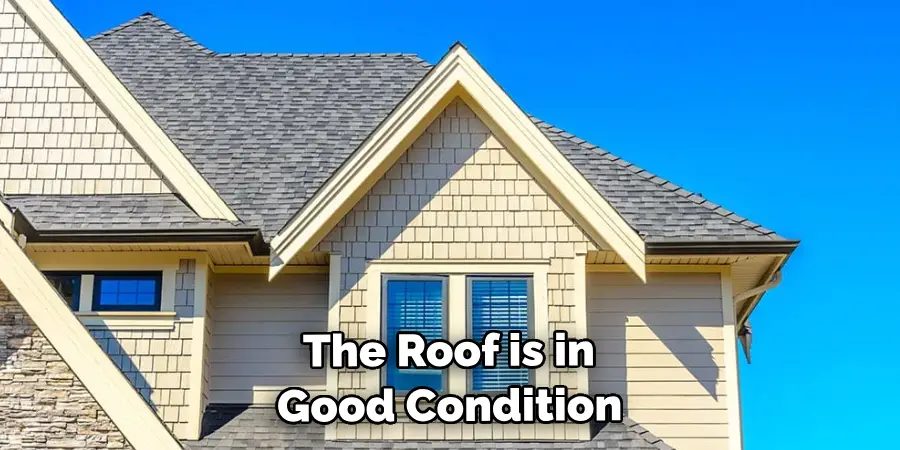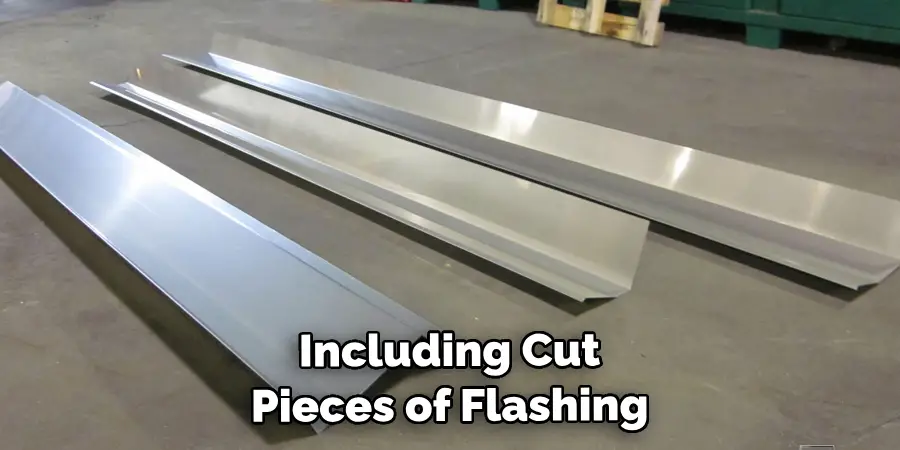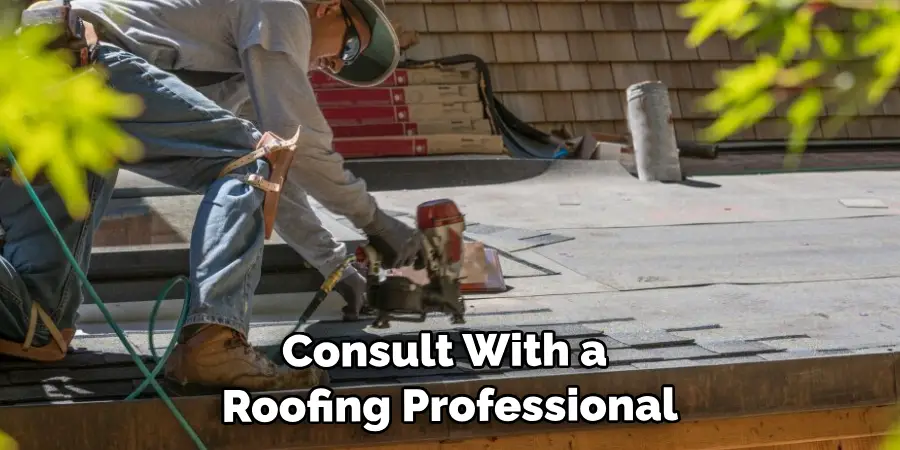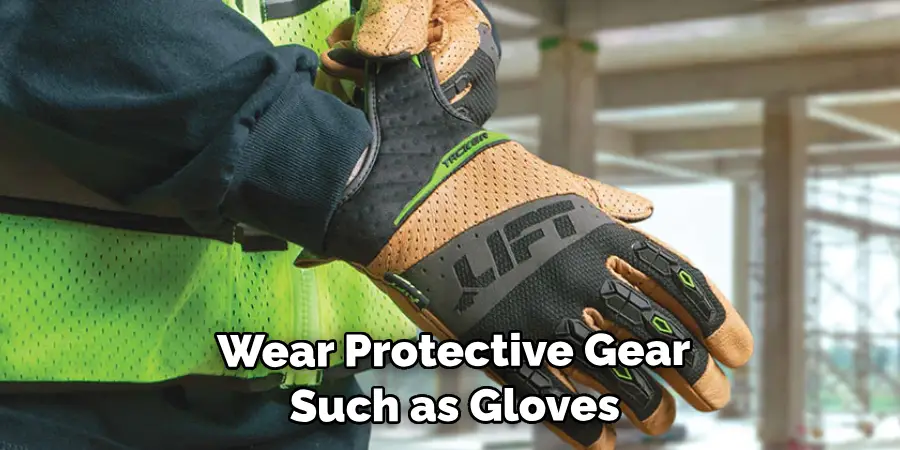Welcome to our step-by-step guide on how to install flashing on existing roof! If you’ve been experiencing leaks or noticed water seeping through your roof, you’re in the right place. Roof flashing is a crucial component in preventing water damage and ensuring the longevity of your roof.
Whether you’re a seasoned DIY enthusiast or a homeowner looking to save money, this comprehensive tutorial will provide you with all the essential information and expert tips to install flashing on your roof successfully.

From understanding the importance of flashing to the necessary tools and materials you’ll need, we’ve got you covered. Get ready to elevate your roofing skills and protect your home from the elements – let’s dive in!
What Will You Need?
Before we start, make sure you have all the necessary tools and materials to complete the installation process. Here’s a list of what you’ll need:
- Ladder
- Measuring tape
- Roofing nails/screws
- Hammer/drill
- Roofing cement/cloth/tar paper
- Utility knife/scissors
- Chalk line/marker
- Appropriate flashing material (aluminum, copper, lead)
- Safety gear (gloves, safety glasses)
Once you have everything on hand, you’re ready to begin the installation process!
What are the Benefits of Flashing?
Flashing is a thin material installed around roof penetrations, such as chimneys, skylights, and vents. It serves as an additional protective barrier to prevent water from seeping through the openings in your roof. Rainwater can enter your home without proper flashing, causing extensive damage to ceilings, walls, and even the foundation.
Moreover, flashing also acts as a sealant for joints and seams on the roof. It helps to prevent drafts and heat loss, making your home more energy-efficient. Additionally, it keeps out pests and debris from entering your attic space.
Overall, installing flashing on your roof can save you from costly repairs and improve the overall performance of your home.
10 Easy Steps on How to Install Flashing on Existing Roof
Step 1. Prepare the Roof
Before you can begin installing flashing on an existing roof, it is essential to make sure that the roof is in good condition and free from any damage. You should inspect the ceiling for any wear or damage, such as cracked shingles, loose nails, or missing pieces. Once you have identified any issues, you should repair them before installing the flashing. You should also clean off any debris or dirt from the roof’s surface before beginning.

Step 2. Measure and Cut Flashing
Once your roof is prepared, you will need to measure and cut the flashing to fit your roof’s dimensions. It is essential to make sure that all of your measurements are accurate so that your flashing fits appropriately and does not leave gaps where water can enter your home. When cutting your flashing, use a sharp blade and safety glasses to protect yourself from injury.
Step 3. Install Flashing
After measuring and cutting your flashing, installing it onto your existing roof is time. Start by applying a layer of asphalt cement or tar along the edges of the area where you will install your flashing.
Then, place your flashing onto the location and press down firmly so that it adheres properly to the roof’s surface. Finally, use galvanized nails or screws to secure the flashing in place and ensure that it does not move during high winds or heavy rains.
Step 4. Seal the Edges
Once the flashing is securely installed, the next step is to seal its edges. This step is essential to prevent any water leakage. Use roofing cement and apply it generously along the edges of the flashing, ensuring all seams and nail or screw heads are fully covered. Be careful not to leave any gaps.

Once completed, allow the cement to dry completely as per the manufacturer’s instructions. Remember that the drying times may vary based on the temperature and humidity levels.
Step 5. Check for Proper Installation
After the cement has dried, it’s time to double-check your work. Inspect your flashing thoroughly for any signs of possible problems. Make sure there are no gaps or loose edges that could allow water to seep in. Additionally, ensure that the flashing is securely fastened and there are no signs of buckling or warping.
If you find any problems during this step, it’s essential to address them immediately to avoid potential water damage in the future. Once satisfied with the installation, you’ve installed flashing on an existing roof. Congratulations!
Step 6. Perform Regular Maintenance
Now that you’ve installed the flashing successfully, it’s crucial to remember that regular maintenance is key to its longevity. Periodic checks, especially after severe weather conditions, are essential to ensure the flashing remains intact and protects your home against water leaks. Look for any signs of wear and tear, loose screws, or damages, and repair them promptly.
It’s also recommended to clean any debris on or around the flashing area to prevent blockages and build-up. By doing so, you can maximize the lifespan of your newly installed roof flashing and maintain the health of your roof in the long run.
Step 7. Review Your Work and Clean Up
Once you’ve performed regular maintenance, take a step back and review your work. Double-check all the flashing areas and ensure you have caught all the spots. It’s time to clean up the work area if everything checks out.

Carefully collect any leftover materials, including cut pieces of flashing, nail or screw fragments, and other debris. Dispose of them safely to avoid any potential hazards. Cleaning up diligently is a vital step towards preserving your roof’s health and safety, and it helps to maintain a clutter-free environment for any future roof maintenance tasks.
Step 8. Final Inspection and Ongoing Maintenance
After cleaning up, perform a final thorough inspection to ensure the flashing is securely in place and functioning as intended. It’s crucial to note that installing flashing is not a one-time task but part of an ongoing maintenance process for your roof’s health.
Regularly conduct inspections, especially after heavy rainfall or snowfall. Ensure that the flashing remains intact and no debris accumulation could lead to water seepage. If you notice any damage or loosening over time, address them immediately to prevent more significant issues. By treating your flashing as a vital part of your home’s overall protection, you will prolong the lifespan of your roof and maintain its excellent condition year after year.
Step 9. Proactive Planning for Severe Weather Events
As you continue with your regular maintenance checks, it’s worthwhile to pay extra attention during times of severe weather. Heavy rains, snow, high winds, or hail can all place additional stress on your flashing and may cause damage.
After any significant weather event, conduct a thorough inspection of the flashing to check for any signs of damage or displacement. If you anticipate a severe weather event, consider seeking professional help to bolster the stability of your flashing, thus ensuring the continued protection of your home from water damage.
Step 10. Seek Professional Advice When Necessary
While installing and maintaining flashing on your existing roof is a task you can handle personally, there may be instances where professional advice is valuable.
Particularly, if you encounter complex situations, such as flashing around chimneys, skylights, or other roof penetrations, professional help ensures the job is done correctly and safely.

Likewise, if you notice persistent issues despite regular maintenance, it might indicate underlying problems that require a professional’s expertise. So, don’t hesitate to consult with a roofing professional when in doubt. Their expert advice can help prevent potential damages, saving you time and money in the long run.
By following these steps, you will have successfully installed flashing on your existing roof and maintained its proper functionality.
5 Additional Tips and Tricks
- Prioritize Safety: Roof work can be dangerous. Always use a sturdy ladder, wear non-slip shoes, and consider using a harness for added safety.
- Choose Quality Materials: Opt for durable, weather-resistant flashing materials, such as copper or galvanized steel, to ensure longevity.
- Proper Sealing: Apply a generous amount of roofing sealant under and over the flashing for maximum water resistance.
- Check Weather: Try to install roof flashing on a dry, calm day. Adverse weather conditions can compromise the installation process and your safety.
- Maintenance: Regular inspection and maintenance of the roof flashing can prevent future leaks and damage.
With these additional tips and tricks, you can ensure a successful installation of roof flashing on your existing roof.
5 Things You Should Avoid
- Ignoring Manufacturer’s Instructions: Every flashing material is unique and may have specific installation instructions. Ignoring these can lead to improper installation and potential issues down the line.
- Not Wearing Protective Gear: Installing roof flashing can be hazardous. Remember to wear protective gear such as gloves, non-slip shoes, and eye protection.
- Rushing the Process: Take your time during the installation process. Running can lead to mistakes that could compromise the effectiveness of your flashing.
- Overlapping Incorrectly: Overlap the flashing pieces in the right direction, similar to shingles, so water can run off the roof correctly without getting underneath.
- Neglecting Regular Inspections: Skipping regular checks once the flashing is installed can lead to unnoticed damage and leaks over time. Regular inspections can help identify and fix minor issues before they become major problems.

By avoiding these common mistakes, you can ensure a successful and long-lasting installation of roof flashing on your existing roof.
Do All Roofs Need Flashing?
While not all roofs require flashing, it is essential for most residential and commercial roofs. It is crucial in protecting your home from water damage by preventing water penetration through the roof joints. Even flat or metal roofs need flashing to protect vulnerable areas like vents, chimneys, and skylights.
Additionally, local building codes often require flashing installed on roofs as an added safety measure. It is essential to check with your local authorities before starting any roofing project to ensure compliance with regulations.
In conclusion, installing flashing on your existing roof is a vital aspect of proper roof maintenance that should be noticed.
Where Should Roof Flashing Be Installed?
Roof flashing should be applied where water may penetrate joints or openings, such as chimneys, skylights, vents, and intersecting roof planes. Additionally, installing flashing around any obstructions on the roof, such as pipes or dormers, is essential.
Flashing can also be installed along the roof’s edges to prevent water from seeping into the structure. Remember to consult with a professional or refer to the manufacturer’s instructions for specific areas that may require flashing on your roof.

Overall, installing roof flashing on an existing roof requires careful attention to detail and proper techniques. By following these tips, you can ensure a successful installation that will protect your home from the elements for years. Remember to prioritize safety, use quality materials, and perform regular maintenance to maintain your flashing.
Conclusion
With the right materials, guidance, and elbow grease, installing flashing on an existing roof is not difficult. It is important to take all necessary precautions when working at height and ensure that all needed safety equipment is employed.
Once the job is done correctly, it will provide your roof with lasting protection from leaks for years to come — so it’s well worth doing the job well! If, for any reason, you find yourself in need of help or more detailed advice, do not hesitate to seek out professional assistance from a licensed contractor. That way, you can save time, money, and stress associated with DIY jobs.
Hopefully, this guide has given you the necessary knowledge and tips to successfully tackle your roof flashing installation project.
Now that you know exactly how to install flashing on existing roof correctly, put on your safety gear and get out there!
